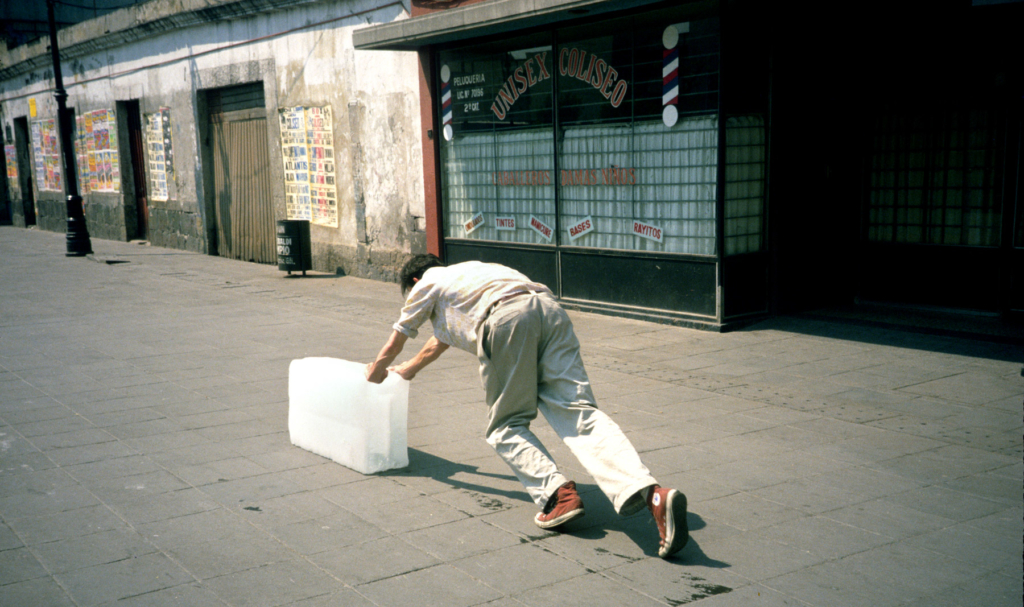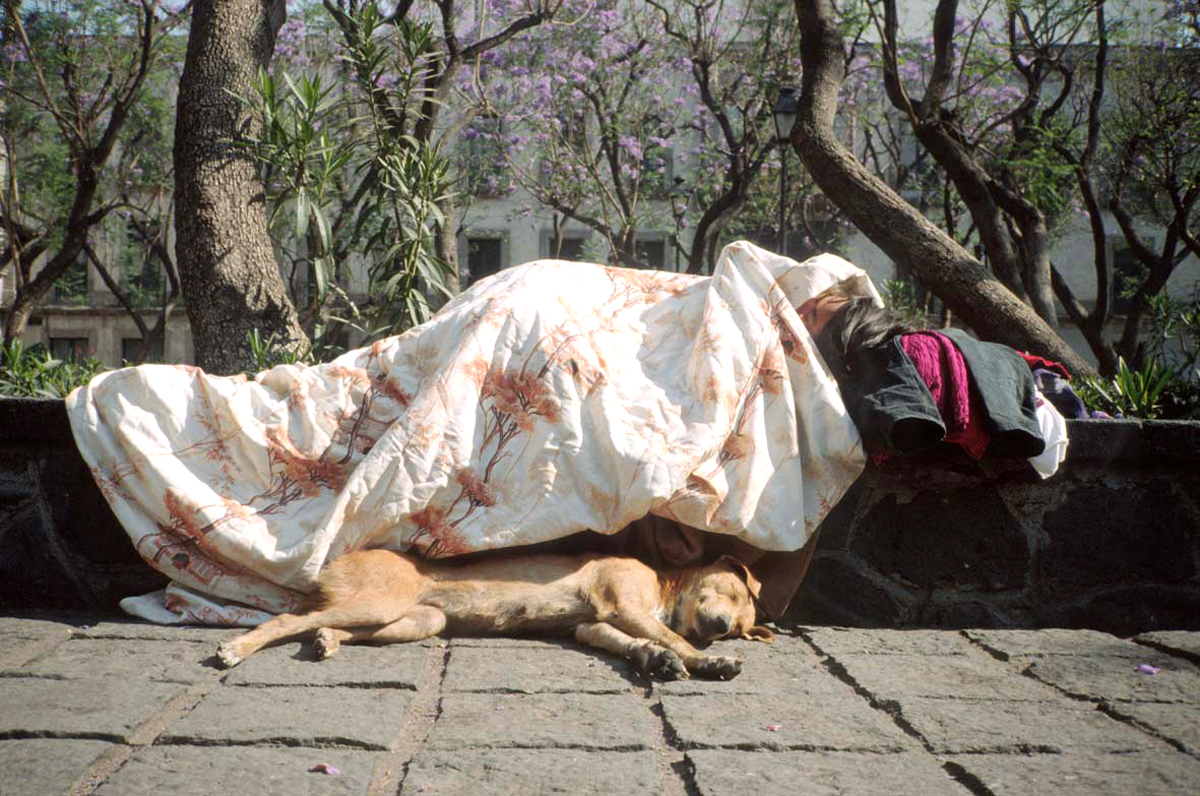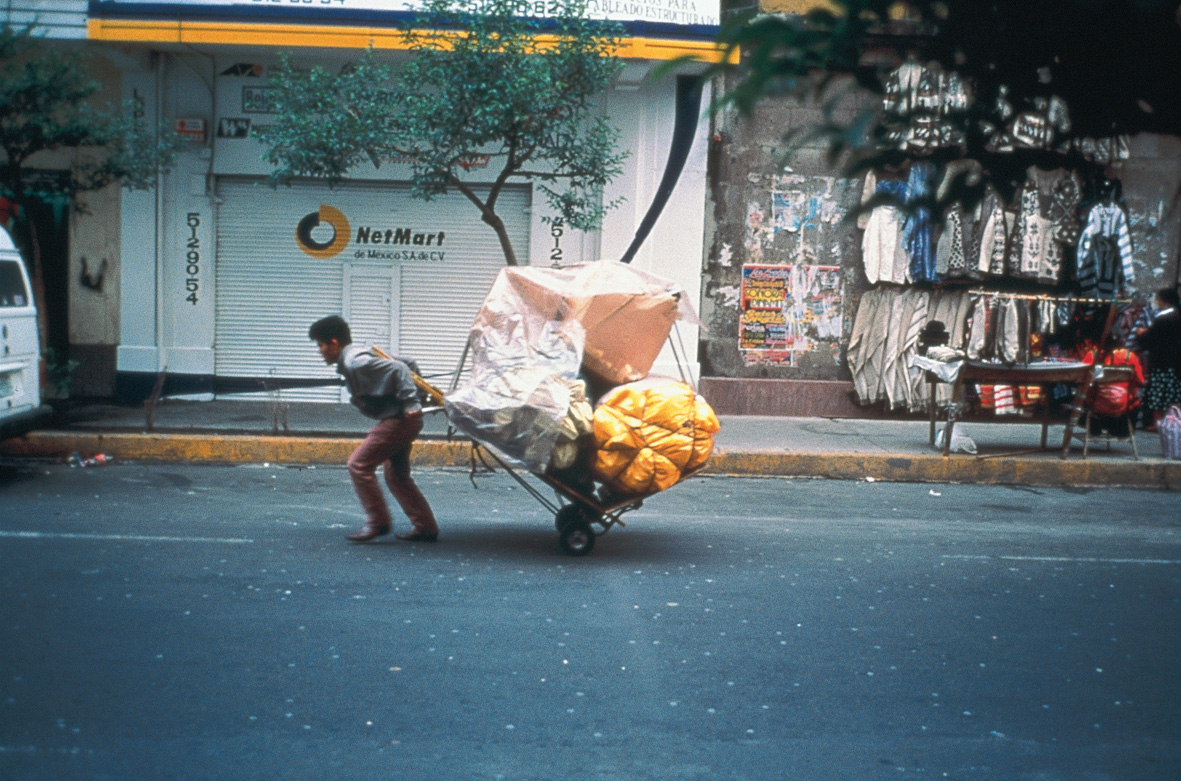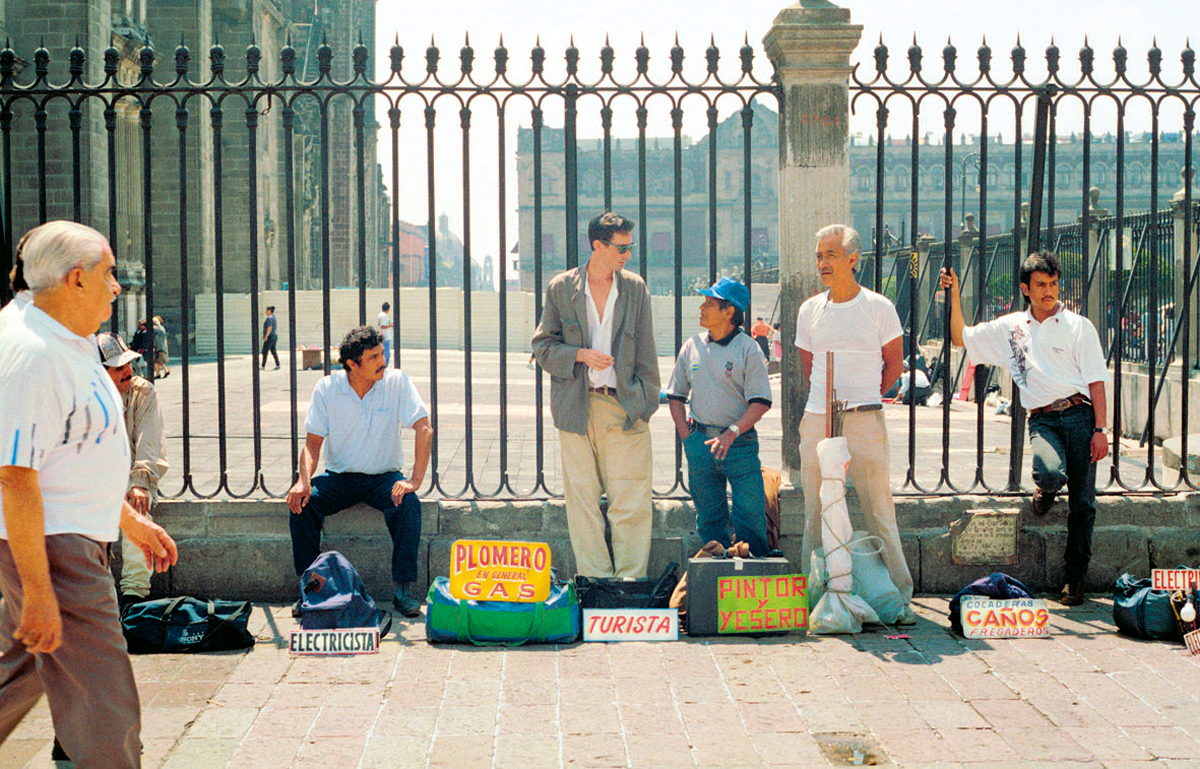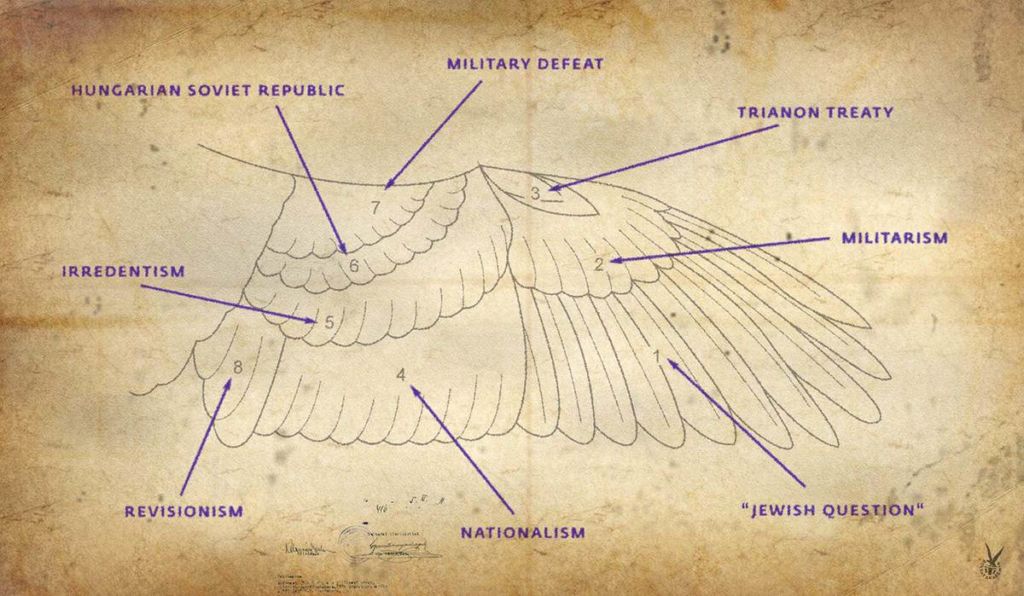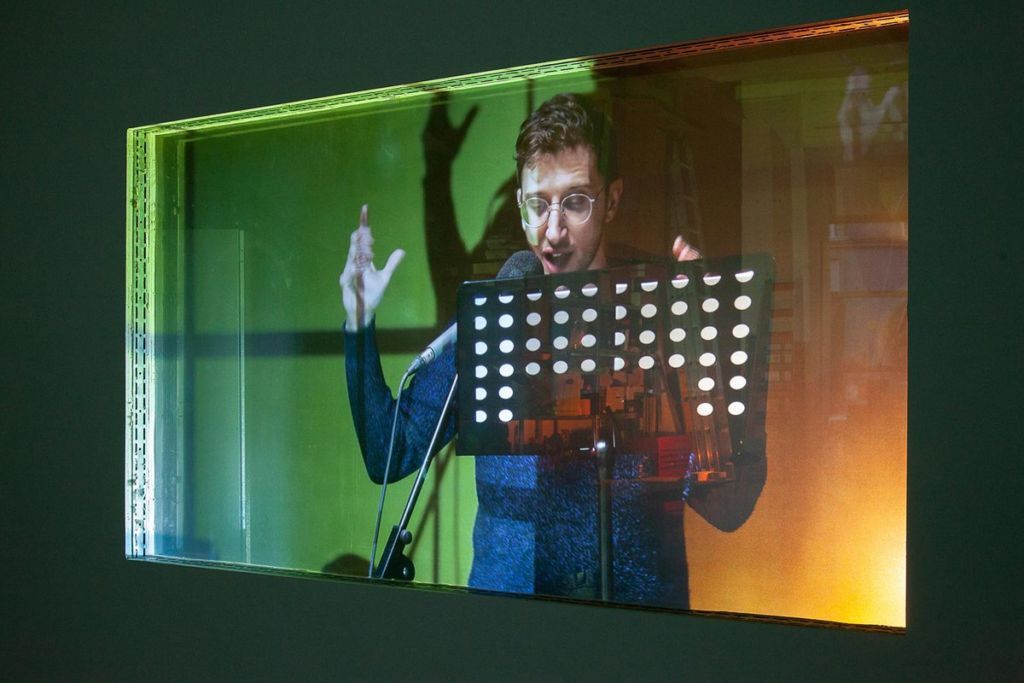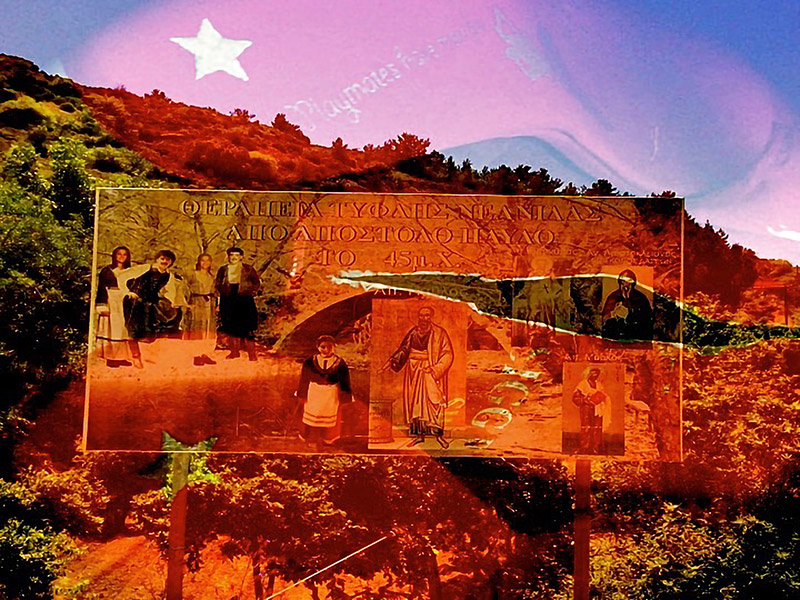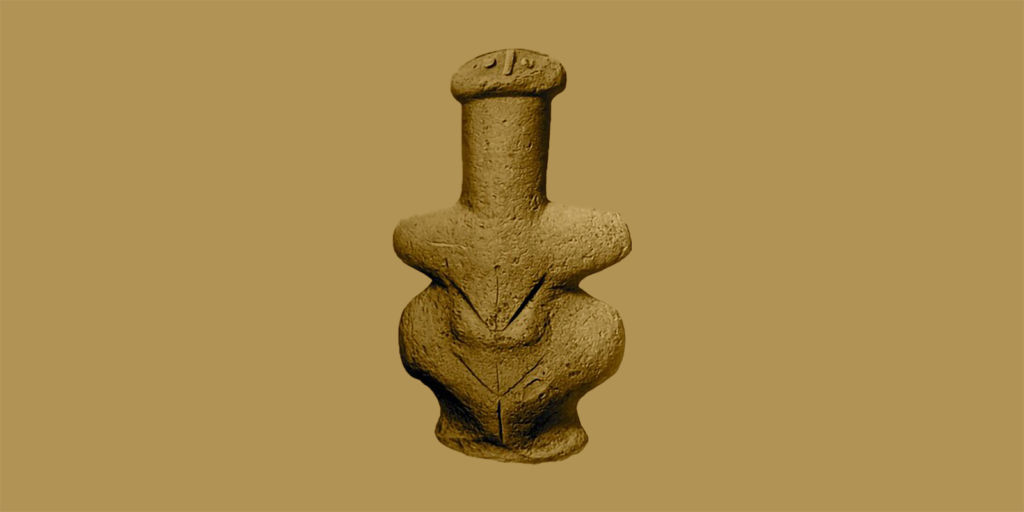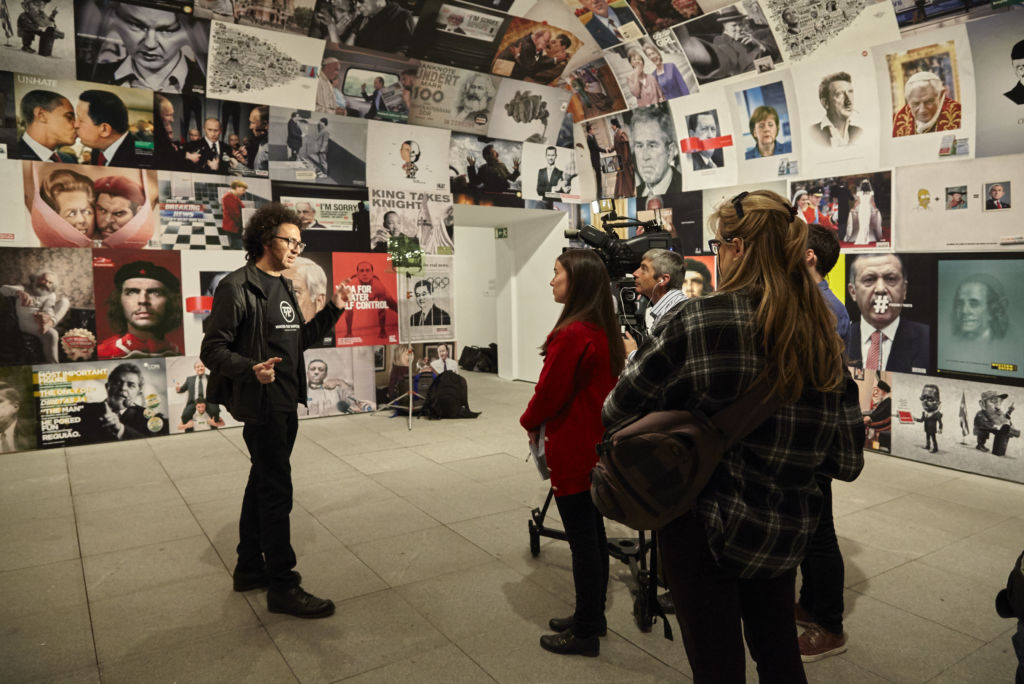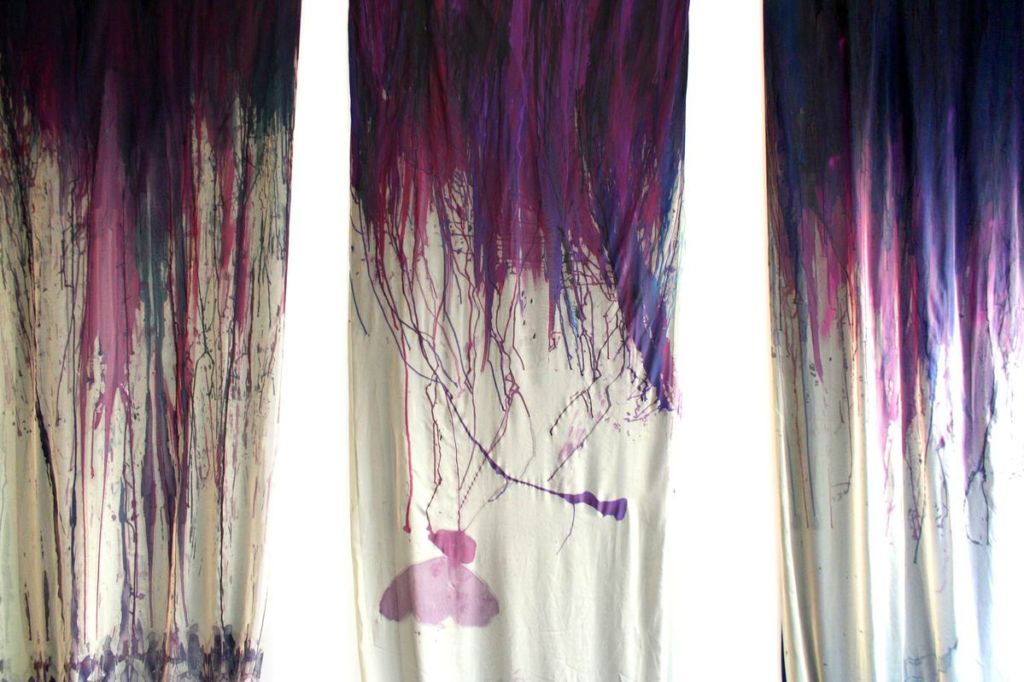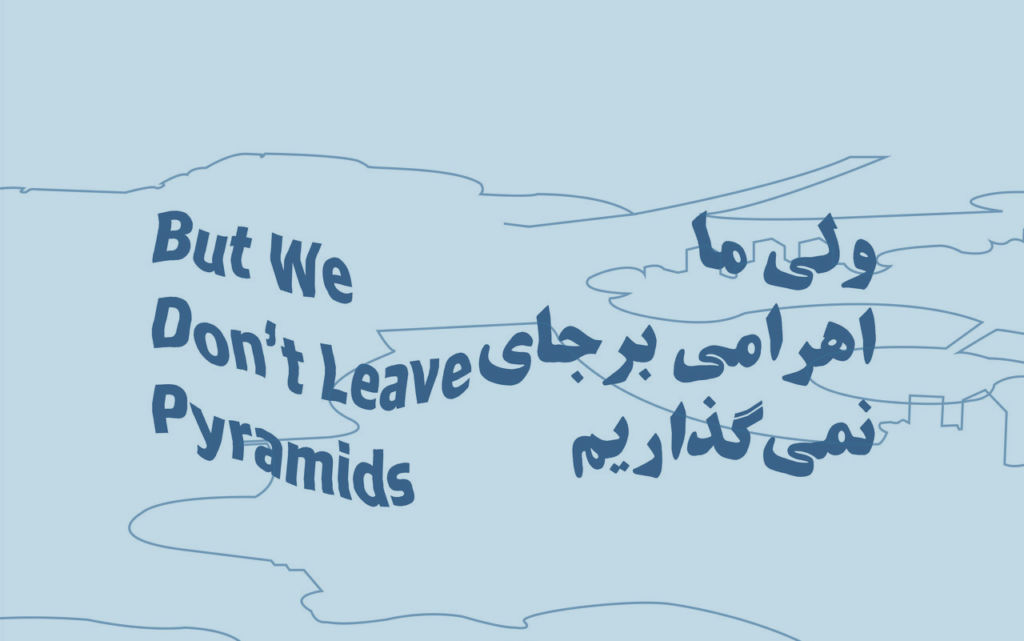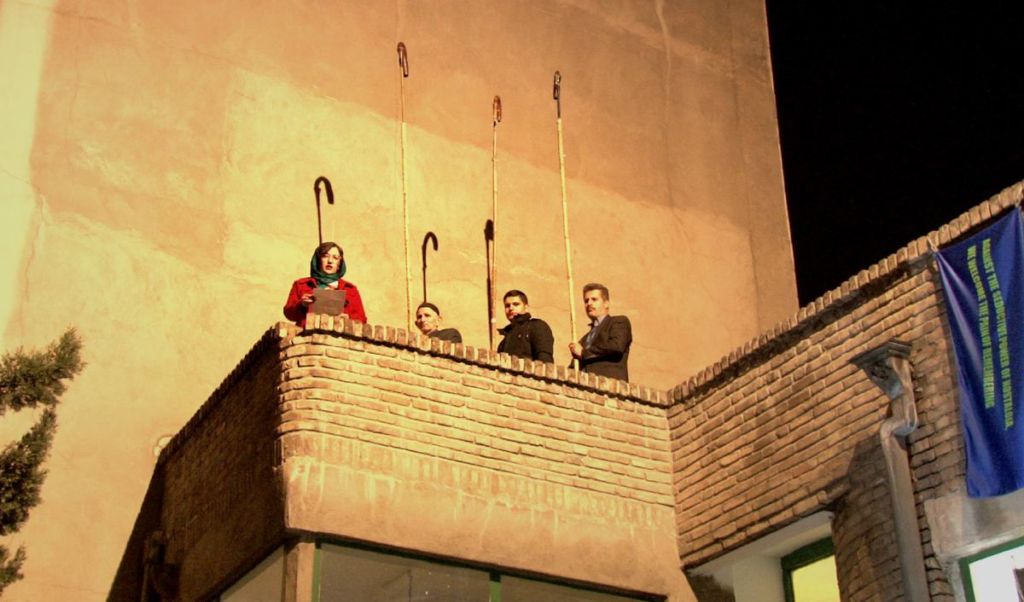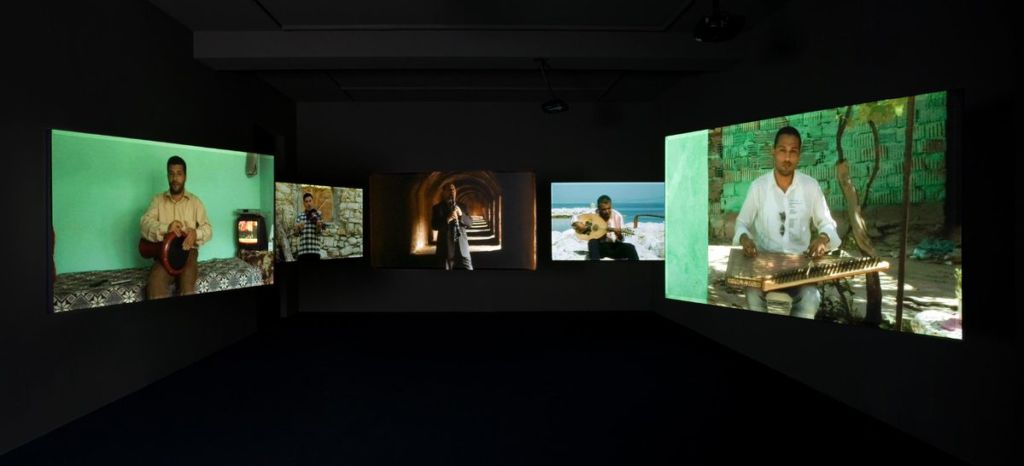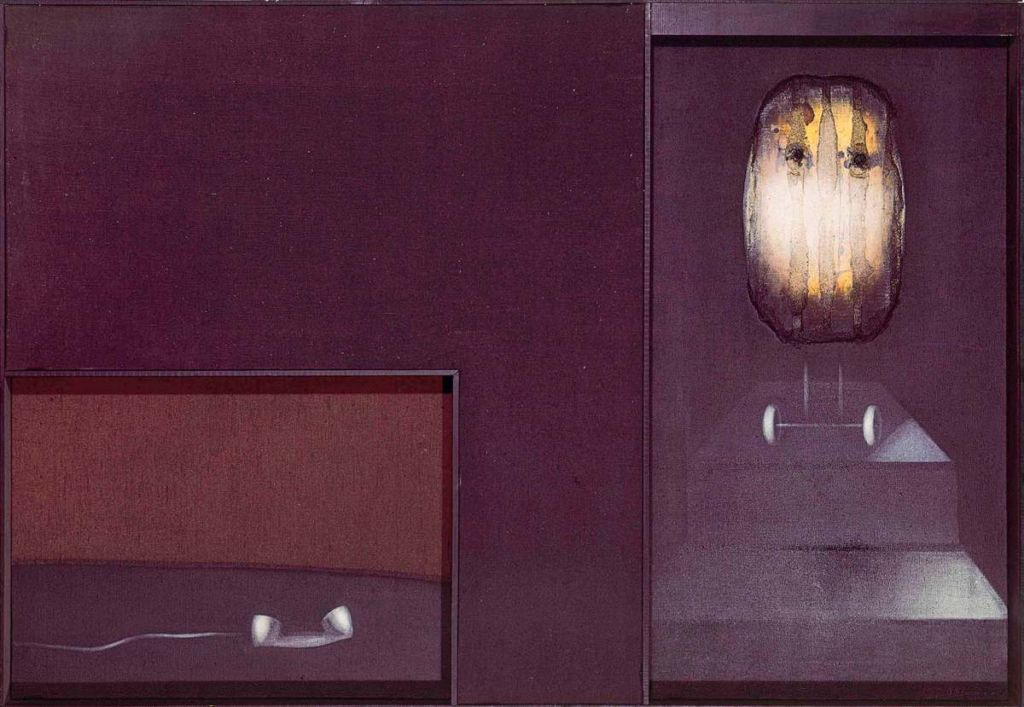Sophie Lapalu draws an organic portrait of Mexico City through the prism of the artwork of Francis Alÿs, a Belgian artist who has been living in the Mexican capital since 1989. Both political and poetical, his work is essentially based on social experimentation and examining the place of human beings within such an enormous city, between solitude and the necessity for exchange.
Director of Latino-American studies and Professor of Spanish Literature and Civilization at Princeton University, Rubén Gallo is the author of Mexican Modernity, an essay on Mexican avant-gardes, Las Artes de la Ciudad, on Mexican art in the 1990’s, and Freud au Mexique (Ed. Campagne première, 2013).
Rubén Gallo, « Mexico D.F. La ville de tous les délires », in Mexico, Chroniques littéraires d’une mégalopole baroque, trad. S. Doubin, Autrement, Paris, 2007, p. 8.
Francis Alÿs, « La cour des miracles », discussion with Corinne Diserens, in Francis Alÿs, Walking Distance From The Studio, exhibition catalogue, Kunst Museum, Wolfsburg, 2004, p. 77.
Historian and art critic as well as a curator associated with the Tate Gallery for Latino-American collections, Cuauhtemoc Medina is also the instigator of the Institute for Æsthetic Research at the National Autonomous University of Mexico. He met Alÿs very early upon his arrival, has written extensively on the artist’s work and contributed to the organisation of the work Where Faith Moves Mountains in Lima (Peru), in 2002.
Francis Alÿs et Cuauhtémoc Medina, note to Ambulantes, in Francis Alÿs, A Story of Deception, exhibition catalogue, Tate Publishing, London, 2010, p. 56.
See Georg Simmel, Philosophie de l’argent (1900), trad. S. Cornille et P. Ivernel, PUF, Paris, 1987, as well as Les grandes villes et la vie de l’esprit (1903), followed by Sociologie des sens (1908), trad. J.-L. Vieillard-Baron, Payot, Paris, 1989.
Frédéric Vandenberghe, La sociologie de Georg Simmel, La Découverte, Paris, 2009, p. 68.
Simmel noticed a “hypertrophia of the sense of vision”; vision has a tendency to substitute itself for the other senses. This abnormal increase, developed to start off with to respond to the omnipresence of elements to analyse and anticipate, paradoxically brings about a form of anxiety.
Contrary to what it seems, this video is not the documentation of an action; the artist assembled and edited the images (the sheep move in exactly the same manner and the shadow of the mast does not change as time passes). Francis Alÿs considers this video as a “fiction”.
Michel Foucault, “Leçon du 14 mars 1973,” in La société punitive, Cours au Collège de France, 1972-1973, Gallimard, Seuil, Paris, 2013, p. 200.
Id., « Résumé du cours », dans ibid., p. 265.
Michel Foucault indicates by this term the actions of workers who refuse to devote their bodies entirely to the apparatus of production (idleness, holidays…). Cf. Id., “Leçon du 14 mars 1973,” op. cit., p. 192.
Id., « Leçon du 7 mars 1973 », dans ibid., p. 197.
Id., « Leçon du 24 janvier 1973 », dans ibid., p. 72.
Id., « Leçon du 14 mars 1973 », dans ibid., p. 192.
Ibid.
We borrow the title of Paul Lafargue’s book published in 1880, Le Droit à la paresse (The Right to be Lazy).
All Francis Alÿs’ videos are available free of charge on his website : francisalys.com
Michel Foucault, Surveiller et punir, Naissance de la prison, Gallimard, 1975, p. 236. (Discipline and Punish. The Birth of the Prison)
Francis Alÿs, « La cour des miracles », op. cit., p. 95.
Rubén Gallo, op. cit., p. 28.
Francis Alÿs, preface to the work Fairy Tales, in Francis Alÿs, A Story of Deception, op. cit., p. 90.
Id., interview with David Torres, “Francis Alÿs, simple passant,” Artpress n° 263, 2000, p. 21.
According to writer Rubén Gallo1, Mexico City is a “monster, an urban catastrophe, a postmodern nightmare2.” Nevertheless, there are many people who, like sailors at the entrance to the Straits of Messina, irresistibly attracted by the song of the mermaids of the metropolis, find they are unable to leave. Francis Alÿs is one of them.
Born in Antwerp in 1959, he was trained as an architect and arrived in Mexico City as part of a project to help reconstruct the city after the earthquake in 1985 – which caused the death of around ten thousand people and colossal damage to the urban infrastructure. He moved there permanently in 1989. From that point onwards, he was to enact very simple events he would then document by using photography, such as blocking a pillow in the broken window pane of a building (Placing Pillows, 1999) or asking a child to balance a spoon on his nose thanks to static electricity (Péchés de jeunesse, 1989-1990). From then on till the 2000’s, his work took shape to the rhythm of the megalopolis and the customs of its inhabitants whom he observed while travelling through the capital, pacing up and down the footpaths and the avenues. Walking is a philosophy of life as well as a form of social resistance for this privileged spectator who was gradually to become a secret actor of situations as irrational as they are poetic. Between observation and intervention, his work reflects the hopes and failures of the modernization of a society whose real force seems to be located in the strategies of resistance it unfolds, strategies that are as modest as they are indispensable faced with the ineptitude of power and the absurdity of every-day life.
Living in Mexico City requires ingenious strength to avoid being devoured by its mermaids. The third most populous city in the world, it spreads over 1500 square kilometres at an altitude of 2400 metres. Built on the ruins of Tenochtitlán, the ancient Aztec city, which was situated on the banks of Lake Texcoco – the canals built by the Aztecs were filled in by the conquistadors, and the new city was built on the terribly unstable subsoil. Mexico City is constantly threatened by collapse as well as flooding; the overexploitation of the water table sweeps the land subsidence along while the country’s rivers pour in concomitantly. Water management, between evacuation and supply, is an insoluble brainteaser. Another flow to manage is the traffic provoked by almost 20 million inhabitants. Faced with permanent traffic jams, the authorities endlessly search for solutions to the problem; they dig up main thoroughfares, draw up junctions, build highways and ring roads with maze-like interchangers and feeders.
Los Insurgentes, the longest avenue in the world, goes from the posh areas south of the capital to the poorest ones in the north and offers a perfect symbol of Mexican social violence. But both the luxurious villas and the slums of corrugated iron have to cope with the filthy pollution that kills up to 4000 people per year. Especially since the elements also have their part to play; the volcano, Popocatepetl, taunts the city below by spitting sulphur and fine particles in its face. The sky is never blue in Mexico City. How could one live in such a megalopolis? The recent Sante Fe area, built on a gigantic open-air rubbish dump, was supposed to give an answer to this question. The result is that it forms a generic, lifeless space, dotted with skyscrapers and swarming with cars. The historic centre of Mexico City, however, manages to hold out against time. François Alÿs sees it as “a sort of negative space of the city, a miracle of resistance against the saturation of the urban infrastructure3” which remains vibrant and escapes all attempts at normalization. A place of power and therefore the traditional rendezvous for demonstrations, where beggars rub shoulders with plumbers looking for work, children fly kites while street sweepers send the litter left by pedlars flying, those same pedlars who call out to tourists while street singers try to cover the honking of cars with their voices.
Ever since he arrived, Francis Alÿs has been carefully recording this heterogeneous, chaotic crowd: men sleeping in public spaces (The Sleepers, 1999 till today), begging (Beggars, 2001 till today) or protecting themselves from the sun in the shade of the mast on Plaza Zócalo – a symbol of authority transformed into a monumental umbrella by those waiting for their appointments, on the exact spot of the pre-Hispanic city centre (Zócalo, 1999, twelve-hour video). The artist also takes photos of the pedlars (Ambulantes, 1992 till today), a funny, archaic species who, like ants, pull colossal loads of merchandise behind them. This collection of images, according to art critic and friend of the artist Cuauhtémoc Medina4, can be seen as a social taxonomy of informal economies and alternative use of public space, incarnated by the refusal of the population to conform to the criteria of technological, social and cultural order of the West5.” This form of contestation precisely sets up the artist’s ground, in a city torn between the will to enter the world economy and an inner resistance to all forms of modernization. As for Francis Alÿs, he does not only observe the defeños (the inhabitants of Mexico D. F.), he fits discreetly into the urban network, opting for an active attitude of social experimentation.
In opposition to the reification of social interaction
The Collector (1990-1992) was one of his first actions. During an undetermined period, the artist walks through the streets of Mexico City’s historic centre, dragging a magnetic toy on wheels in the shape of a dog behind him, made from scrap material. Little by little, the object is covered with discarded metal pieces from the street. After several days, people start talking about the crazy gringo who strolls up and down the streets with a magnetic dog. In spite of its extreme simplicity, this action astonishes passers-by and provokes a rumour, which becomes in turn a providential method for the artist in his interaction with the city. His work manifests itself in the immensity of collective speech and escapes from its creator, inducing other exchanges rather than those that usually occur during merchant dealings.
Urban development, a consequence of industrialization and the accumulation of capital, has radically transformed social relations. If these once constituted the distinctive feature of human commerce, they have since been reduced to consumer exchanges. This idea was advanced by the German sociologist Georg Simmel, a century before Francis Alÿs. Another witness to the urban expansion of a metropolis, Berlin, Georg Simmel observed the modifications engendered by triumphant capitalism on human relations in the early 20th century6. According to Simmel, these consequences deploy themselves over three apparently contradictory points: liberation of the individual, loss of meaning, and reification of social interaction.
The first point happens when groups people belong to are enlarged. In cities, social obligations are less urgent and individual liberty increases. Urban society no longer forms a community, as was the case in villages; people in the group are autonomous and able to develop singular qualities. This postulate enables Alÿs to act incognito in the capital. When he settles down against the railing on Plaza Zócalo next to people looking for work, nobody seems to care. The two individuals next to him have written their skills on a board placed at their feet; one is a plumber/electrician and the other a painter/plasterer. Francis Alÿs presented himself humourously as a tourist (Turista, 1994). This action would be more difficult to realize in a village where everyone knows each other. However, the price to pay for individual liberty is the reification of social interactions; Georg Simmel noticed that, in cities, personal bonds are diluted in the objectivity of relations. Life together is like a “public limited company”; humans are perceived through their function, as a means to an end, paid to be just that and perfectly substitutable by others ready to accomplish the same task.
In the photograph Turista, the workers next to Alÿs seem to exist only through their function; one does not see their name or any sign of individuality. This is how humans lose the sense of the meaning of their lives; engaged in formal relations that are reduced to consumer exchanges, they remain alone among others. To make up for their solitude, individuals become attached to objects and the means consumer society puts at their disposal to fill this void. Francis Alÿs spent a day in the metro to trade a pair of glasses with commuters for any other object, and then that object for another, and so on (The Swap, 1996). The relation between individuals, effectively founded on a transaction, was not based here on the exchange of an item for its monetary value. If money represented for Georg Simmel the “symbol that expresses and condenses all social relations7,” swapping can be seen as a form of contestation. In order to acquire a new item, this operation implies that one rids oneself of another. This parallel economy reappears elsewhere in Mexico during every economic crisis and comes forward as an alternative to a malfunctioning system, between alienation and liberation. Francis Alÿs’ active attitude confronts the reification of social interactions and questions the loss of meaning in human relations.
In 2001, on Plaza Santo Domingo, the artist looked at a fixed point in the air until a small group of people crowded around him. The passers-by tried to understand what the individual was looking at. But there was nothing to see. Then the artist leaves [Looking Up, (Plaza de Santo Domingo, Mexico D.F.), 2001, video]. When Georg Simmel studied the influence of urban environment on the conditions of the inhabitants of large cities’ sensorial experience8, he realized that the metropolitan mentality was characterized by a form of reserve and indifference, developed in order to preserve urbanites from different social classes from being too physically close. Without this distancing, he affirmed, it would simply be impossible to live together. The city dweller’s indifference is the actual condition of his liberty. Between nonchalance and curiosity, the passers-by who crossed Francis Alÿs’ path did not however remain insensitive; the artist wasn’t looking at anything and yet they tried to see what he was staring at so insistently. This action was presented as an implicit wish for reform in an individualistic society, as well as a prank directed towards gregarious instinct.
It reminds us of another work, Cuentos patrioticos (1997), a video the artist edited. We see him turning around the Plaza Zócalo shepherding a flock of sheep9. This work is suggestive of his unfailing interest in forms of resistance and makes a clear reference to a famous episode in Mexican history. In 1968, a demonstration was organized by the government on this same square following the “profanation” of the national insignia by protesting students who had hoisted a red and black flag. Thousands of civil servants were then summoned by the government to attend a ceremony for the “reparation of the flag” destined to prove the so-called support of the people. But instead of applause, the figurants in this masquerade started to bleat like sheep before the seat of power. As a personification of the opposition to normalization and the abstruse pressures of modernity, the monstrous Mexican capital fascinates the artist.
Acting in secret and at a total loss
When Francis Alÿs carries out his actions in the streets of Mexico City, he does so in secret from the art world. He neither convokes spectators nor specifies the artistic character of his proposition. He is not seen by passers-by as an artist. Could that be a strategy in order to shirk the field of visibility that rules today’s society? According to Michel Foucault, this field of visibility allows each and every human being’s parameters of thinking and doing to be effectively controlled. The philosopher goes on to say that punishment in Western society is only possible under a sort of general surveillance; like prisoners in the panopticon, all individuals know they are observed, “submitted to a permanent ordeal10.” The control extends way beyond prison to people’s entire lives until it becomes interiorized by individuals, determining in that manner the “civilization of surveillance 11” we live in and that was initiated in the early 19th century. At that time, those who forged the law were threatened by new modes of production and employed workers: an attack on accumulated capital and profit by the annihilation of the workforce represented by workers. The problem was to know how employees’ “illegalism” 12 could be controlled. “Such control supposes […] a much finer machine, one which could go much further than the so-called penal machine: a mechanism of the penalization of existence. One will have to supervise existence in a sort of diffuse, daily punishment, introduce para-penal extensions into the actual social corps, aside from the judicial apparatus13.”
To demonstrate the extension of the model of the prison to that of everyday life, Michel Foucault took the significant example of the control of time. When a criminal has to be punished, his time is subtracted from him; the duration of seclusion corresponds to the gravity of the act he committed. The “form-prison” is thereby twin to the “form-wage”; the latter effectively remunerates the worker in function to the time he has worked. “Time being the only good possessed, one buys it for work or takes it away for an infraction14.” The quantity of time has become an economic and moral measure that evaluates the sum of money corresponding to the work furnished or the extent of the punishment in function to the gravity of the crime. Power over time must therefore be taken.
What then is the worst enemy of the system? Idleness, the moment when the worker “conceals”15 his body and his time from the market law, when he “disperses his strength”16 and decides himself how he will use it. The artist who takes the time to stroll up and down the city and do whatever he likes gratuitously does not appear to be subjected to this regime; he has time to lose, is opposed to all forms of rationality and exhibits his status as an idle man. When Francis Alÿs stands behind a board placed at his feet on which he has written “Turista” in red on a white background, he announces an activity that does not fit into a professional category; nobody can be paid as a tourist. He ironizes on the objectivity of social relations in a liberal system where everyone is interchangeable, just like he does on the status of the artist, a sort of permanent tourist or nomadic dilettante rarely taken seriously by society. He breaks a social taboo, lays claim to the “right to idleness,” 17 and affirms his position. He is not subject to time, he is not a person whose workforce is evaluated by the time he works for another. His gesture in itself produces nothing; it is free.
Acting at a total loss is a recurrent leitmotiv in Francis Alÿs’ work. In the piece Paradox of Praxis (Sometimes Doing Something Leads to Nothing), (Mexico City, 1997), he clearly explores this ambiguity. Doing something does not sometimes lead to nothing: this is the paradox of action (praxis). This term is generally defined as an activity ordained to a result; only here the result is none other than the total disappearance of a block of ice the artist pushed through the streets of Mexico City until it completely melted – which took eleven hours. He thereby laid claim to the fact that he used his (work) force for nothing. We should note that this type of action is able to go by relatively unnoticed in Mexico City.
It is indeed quite common to see individuals pushing ice to keep their merchandise fresh. The proof of this can be seen in another piece by the artist, Ice 4 Milk (2004-2005), a collection of 160 slides projected by two different projectors. On one side, photographs of milk bottles are distributed in the morning at people’s doorsteps; on the other, abandoned blocks of ice are left on the footpath or against a wall. The artist incorporates a daily gesture and pushes it to absurd limits. He takes over his time in a useless, gratuitous, anti-monumental gesture.
From a profitable point of view, one could say he has wasted his day and his ice block. This gesture also seems to go against any artistic result: the reduction of a block into a puddle of water is anti-sculptural. He acts on his own behalf, without warning anyone else, completely unnoticed; he is the master of his own time, offering us a meditation on the profitability of every one of our gestures in a world where utilitarian rationality imposes its absolute supremacy.
As spectators, we are aware of this gesture because the artist then presented the video in the field of art18. Therefore the action was realized in view of being revealed to a public as an artwork. During the action, the artist was filmed; he had not completely wasted his time and did not produce “nothing” on the contrary. The opposition to a capitalist system could therefore be relative. Maybe one should see a form of a parable on the idea of doing something at a total loss, although not as a real waste of time. The artist was still not subjected to a regime of production; he decided himself how to use his workforce. Finally, acting artistically in a public space, in secret, seems to be a simple, modest tactic for refusing to be subjected to the field of visibility that characterizes modern cities, in view of not becoming “the principal of his own annihilation19.” Like the defeños and their daily habits, spurred on, maybe, by their practices, Francis Alÿs has developed strategies to humbly take some power back.
Fiction as contestation
Since his furtive actions are only made public afterwards, through their documentation, Francis Alÿs would like to question the impossible value of proof of what he shows to the public. As someone concerned by the permeable limit between fiction and reality, he repeated the action in order to present both versions side by side in the exhibition space (Re-enactments, 2000). The first video is considered as the “original,” the one realized “off guard,” without anyone being aware of the action, and the second as the replica, or a fiction in which all participants play their own roles. “The idea,” says the artist, “consisted in juxtaposing two films, two absolutely similar acts, although the first one was the documentation of the first event, showed in “real time,” “as it happened,” and the second was a precise re-creation of the succession of events seen in the first film, fictionalizing the reality of the events20.” Filmed at a distance by an accomplice, he went into a shop selling guns in the city centre, bought a 9mm Beretta, loaded it and walked out into the street, with the gun in his hand.
Eleven long minutes passed before he was arrested! In a country where the police is often feared as much as criminals, this work proves how easy it is to walk around carrying a weapon unpunished. And the pleasure demonstrated by the police officers when they replay their own incompetence in the second sequence was not quite to their advantage… If, to start off with, the artist seemed to be seeking to prove that there is no indisputable truth between reality and fiction, since one nourishes the other in a movement that permanently goes back and forth, could he anticipate that in Mexico City the frontier between the two was so thin?
Maybe. Rubén Gallo notices in fact that the defeños resort to fiction in order to withstand daily ordeals: “There seems to be a correspondence between the intensity of traumatism and the complexity of narrative production it creates: the more the event is traumatic, the more its expression will be elaborate21.” He tells how during the spectacular economic crisis in 1995 the value of money was split in two, inflation exploded and the bank system almost collapsed, and these events strangely coincided with the mysterious death of hundreds of goats in the agricultural properties north of the capital. The animals presented traces of strangulation or bites on the neck… The rumour was then spread: a strange wild monster, named the chupacabras, “the goat vampire,” was at the origin of these murders. The press took hold of the story and the imaginary beast was on the front pages for weeks. Rapidly, an amalgam was created between the man held responsible for the country’s crisis – President Carlos Salinas de Gortari – and the blood-thirsty creature.
The politician became the chupa-dollares (“dollar vampire”), a chimera decked out with vampire’s teeth and donkey’s ears whose effigy proliferated along the stalls. According to the Mexican writer, this cultural response to an unnamed crisis served as a metaphorical substitution so the country wouldn’t fall into the despair generated by such a situation. As incredible as it may seem, this symbolic revenge came hand in hand with a very pragmatic result: the President had to flee the country and stay in exile for five years, a much more severe punishment than what would have been inflicted upon him by a Mexican court. This societal reaction to a situation of crisis was exceptional and certainly made a strong impression on Francis Alÿs. Maybe this power of fictional production inspired his Fairy Tales that same year? For this piece, the artist walked through the streets of Mexico City while unravelling his pullover.
“If it is true that the highly rational societies of the Renaissance felt the need to create utopias, in our times we should create fables22,” he suggested. So be it. The artist had undone the “thread” of mythological, popular, political history – if this work is reconsidered in the economical and social crisis the country is going through.
Without being militant, his work is still political and its everlasting inscription in Mexico City is a major reason for that. The artist says so himself, “the root of politics is from polis [city]. As soon as the city is chosen as a field of experimentation, the domain of work is political by definition, beyond any personal engagements23.” The Greek politikos points towards what “concerns the citizens and the State.” Wouldn’t that be the elementary place of the artist, that eternal tourist walking through the heart of society, the wandering dilettante who cares about others? While thinking closely about the strategies of resistance to all forms of control or normalization, Francis Alÿs underlines the peaks and valleys of ordinary practices. As both a simple observer and discreet actor when he adopts the logic of such forms, he turns these endured situations into provoked actions and reverses the traditional polarities of civil and civic authority. In this manner, he fits into the intertwining of spaces and operations that go against readability and enables us to envisage other potential actions – even if they get us nowhere.
Translated from the French by Emmelene Landon
